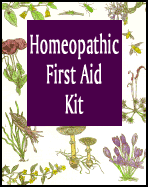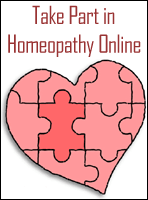I. OBSERVE
A. Eyes: softness, sharpness, fear, hysterical, delicate, evil, irritable, dissatisfied,
pain...
B. Bodies: restless, hyper, slow, timid, aggressive, outgoing, obedient or disobedient,
how sensitive? Shy? Clumsy? Coordinated?
II. Differentiate: Is this a first-aid, acute, or chronic case/problem at this time?
III. Generals: Diet, sleep, weather, mental-emotional state, misc.
IV. Behavioral analysis
A. Playing:
1. Alone or with others?
a) leaders or followers?
b) plays with younger children or peers?
c) imaginative, builders, etc.
2. How does he/she play with animals and toys?
a) obsessed with blanket or toy?
b) rough, break things?
c) fear or love animals?
3. How competitive or aggressive?
4. Reaction to physical pain, scrapes, bumps, etc.
B. Independent vs. dependent
1. How responsible?
2. How handle being alone?
3. Reaction if doesn't get what he/she wants.
4. Reaction to strangers.
C. Patterns
1. Sleep
2. Feeding time, playing time, sleep time.
V. Developmental History
A. Learning to talk, walk, language, comprehension, musculoskeletal development.
B. Toilet training: how child went through it.
C. How was the pregnancy?
D. Family hx: TB, GC, CA
VI. Mental-Emotional State
A. Sensitivity to pain, injury, noise, touch, being carried.
B. Better or worse attention/consolation?
C. Sensitivity to other's pain, to parents fighting, to weather, movies, sad stories, how sensitive is their imagination?
D. Easily startled?
E. Family dynamics
1. How does he/she get along with siblings? Parents?
2. Reaction to new siblings.
3. Divorce
4. Military family, moved many times?
5. Alcoholism, drugs, tension in family?
6. Motivated by fear? Do parents threaten, frighten, humiliate? Fear of punishment by God?
7. Is the child compared with a sibling or parent, forced to live up to parent's role expectations?
VII. Family economics: adequate diet, nutritional status.
VIII. Story about the child. (Usually a chronic constitutional or acute case can be taken directly from a child aged 6 - 8 or older.)
A. Reactions to griefs, deaths, frights.
B. Mother's description of the pregnancy, labor, and birth.
C. Health and family history.
IX. Objective symptoms
A. Facial expression: observe pupils. How aware is the child of his or her environment?
B. Skin
1. Dry, moist, cool, warm.
2. Healthy or unhealthy?
3. Touch the chest, abdomen, forehead, hands and feet.
Note temp, character, moisture, etc.
C. Sweat: amount, parts that sweat, odor.
D. Moles, warts, birthmarks.
E. Tongue: color, furry or smooth?
F. Breath: Offensive?
G. Reaction to stimuli: light in eyes, noise, jar, pinch.
H. Urine and stool.
I. Strength: check grasp, posture. How does the child hold her head up?
X. Fears: Monsters, ghosts, strangers, the dark, movies, being alone, dogs, death, fears something will happen to the parents, something is creeping out of every corner, evil spirits, falling, noises
XI. Sleep: Insomnia: due to pain, fear, over-excitement, want attention, overactive mind?
XII. Food cravings and aversions: including thirst
XIII. Times, modalities for symptoms. |


